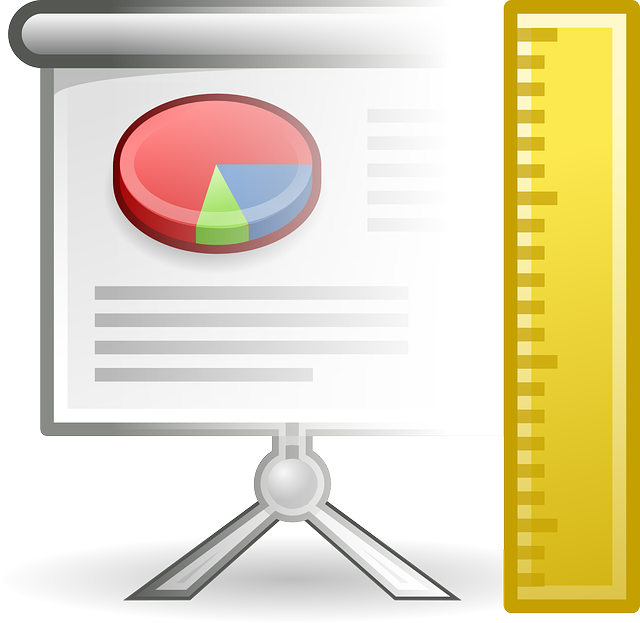How to Successfully Copy Table from PowerPoint to Excel Without Losing Formatting
Introduction
Working with Microsoft Office is usually a seamless experience. However, there can be some things that are unusually difficult to achieve. One of these things is to copy and paste tables from PowerPoint presentations to Excel workbooks while maintaining the original formatting.
Sum Check Your Tables in PowerPoint – Learn More
Whether you're preparing a detailed report or an engaging slideshow, the ability to copy tables from PowerPoint to Excel without losing their formatting is crucial. In this blog, we will guide you through the essential steps, including:
- Preparing Your PowerPoint Presentation and Excel Workbook
- Copying Tables from PowerPoint to Excel
- Preserving Formatting and Links
- Troubleshooting and Best Practices
- Conclusion

Preparing Your PowerPoint Presentation and Excel Workbook
When working on a PowerPoint presentation and an Excel worksheet, transferring tables between the two applications without losing formatting is a real time saver. Proper preparation involves setting up your PowerPoint and Excel files to ensure a seamless process. Here's how to prepare each file in Powerpoint and Excel respectively:
Prepare Your PowerPoint Table
Insert table, add the necessary values and figures, and ensure your PowerPoint table is well-structured and formatted. This includes setting borders, preparing link data, cell colors, fonts, and sizes. But it's important to avoid complex formatting that might not translate well into Excel cells.
Prepare Your Excel Spreadsheet
Open your Excel file and navigate to the Excel worksheet where you want to paste the table. Adjust the column widths and row heights to match the dimensions of the PowerPoint table as closely as possible.
Save Both Files
Save your PowerPoint presentation and Excel file to prevent any loss of work before you start the transfer process.

Copying Tables from PowerPoint to Excel
Are you copy and pasting from PowerPoint to Excel to check your table sums? Check out the TableSum plugin, which allows you to quickly check your tables in PowerPoint without Excel.
Using the "Copy and Paste" Option
The most straightforward method to transfer a table from PowerPoint to Excel is the copy and paste method. Here’s how to do it:
Copy the Table in PowerPoint presentation
- Select the table in your PowerPoint slide.
- Right-click and choose "Copy" or press Ctrl+C.
Paste the Table in the Excel Spreadsheet
- Go to your Excel worksheet.
- Right-click the cell where you want to paste the table and select "Paste" or press Ctrl+V.
Using the "Paste Special" Feature to Maintain Formatting
For better control over formatting, use the Paste Special feature. This method helps maintain the source formatting of the table. Here’s the step-by-step process:
Copy the PowerPoint Table
In PowerPoint, select the table and copy it (e.g. right click then select "copy").
Use Paste Special in Microsoft Excel
In Microsoft Excel, click on the cell where you want to paste the table. Go to the Home tab, click the Paste dropdown arrow, and select "Paste Special". Choose the appropriate paste option that preserves formatting, such as "Picture" or "HTML". Now the table will be in the form of excel data that you can easily update.
Perfect PowerPoint Tables Every Time – Learn More
Using the Object Option for Advanced Formatting Control
For even greater formatting fidelity, embed the table as an object. This method also allows for dynamic updates between the applications, as follows:
Copy the Table as an Object
In PowerPoint, select the table and copy it (again, right click and click "copy" on the table). In Excel, go to the Home tab and click the Paste dropdown arrow, then select "Paste Special". Choose "Microsoft Office PowerPoint Slide Object" and click "OK". Now the Excel data will be in the form of an object.
Linking Data for Dynamic Updates
To create a dynamic link, go to PowerPoint and select the table. Copy the table, then in Excel, select "Paste Special" and choose "Paste Link". Following this special pasting method the ppt presentation will be linked to the Excel data.

Preserving Formatting and Links
Understanding the Importance of Source Formatting in Excel
Preserving source formatting is crucial for maintaining the integrity and readability of your data. Excel allows you to keep the formatting consistent, which is essential for presentations and reports.
Creating Links Between Excel and PowerPoint for Dynamic Updates
To ensure that changes in PowerPoint are reflected in Excel, create dynamic links in these two steps:
- Copy the Table in PowerPoint
- Select and copy the table in your PowerPoint slide.
- Paste Link in Excel:
- In Excel, use the "Paste Special" dialog to paste as a linked object. This will ensure that any changes made in PowerPoint are automatically pasted and updated in Excel.
Tips for Maintaining Formatting When Copying Tables to Excel
Here are our three top tips to convert any table in a powerpoint presentation to excel tables:
1. Adjust Column Widths and Row Heights
Manually adjust the column widths and row heights in Excel to match those in PowerPoint.
2. Use Consistent Fonts and Sizes
Ensure that the fonts and sizes used in PowerPoint are available and used in Excel.
3. Leverage Excel’s Formatting Tools
Utilize tools like the format painter to quickly copy formatting from one part of your Excel sheet to another.

Troubleshooting and Best Practices
Resolving Formatting Loss When Copying Tables
Sometimes, formatting can be lost during the transfer. Here’s how to troubleshoot any issues that you may encounter:
Check Compatibility
This usually shouldn't be an issue, but it is important to ensure that the versions of PowerPoint and Excel you are using are compatible. If you are operating on the same version of Microsoft Office then any excel file should link to any ppt file without error.
Reapply Formatting
If your Microsoft versions are the same and formatting is lost, then the best option is to manually reapply it using Excel’s formatting options. This can include using format painter to format the excel table exactly the way that it is in your powerpoint slide.
Optimizing Your Workflow for Efficient Data Transfer
To optimize your workflow, we recommend that you follow these two best practices:
- Plan Your Layout
- Plan the layout of your Excel worksheet before copying the table. This includes setting up the necessary column widths and row heights.
- Use Templates
- Create templates in PowerPoint and Excel to ensure consistency across different presentations and workbooks.
Ensuring Data Consistency and Accuracy
Maintaining data consistency and accuracy is also a crucial element to success, so you should:
- Double-Check Your Data
- After pasting, double-check that all data has been transferred correctly and that no information is missing or altered.
- Use Conditional Formatting
- Utilize conditional formatting in Excel to highlight any discrepancies or errors in the data.

Conclusion
Recap of Key Takeaways for Successfully Copying Tables Without Losing Formatting
Transferring tables from PowerPoint to Excel without losing formatting requires careful preparation and the use of appropriate paste options. The key takeaways for creating beautiful tables include:
- Properly preparing your PowerPoint presentation and Excel worksheet.
- Using "Paste Special" and "Paste Link" to maintain formatting and create dynamic updates.
- Leveraging Excel’s formatting tools to preserve the appearance of the table.
Final Thoughts on the Importance of Preserving Source Formatting
Preserving source formatting is essential for maintaining the integrity and readability of your data. By following the best practices and troubleshooting tips outlined in this blog, you can ensure a smooth transition from PowerPoint to Excel, keeping your data consistent and well-formatted.
PowerPoint Tables That Always Add Up - Learn More
.png)
.png)

